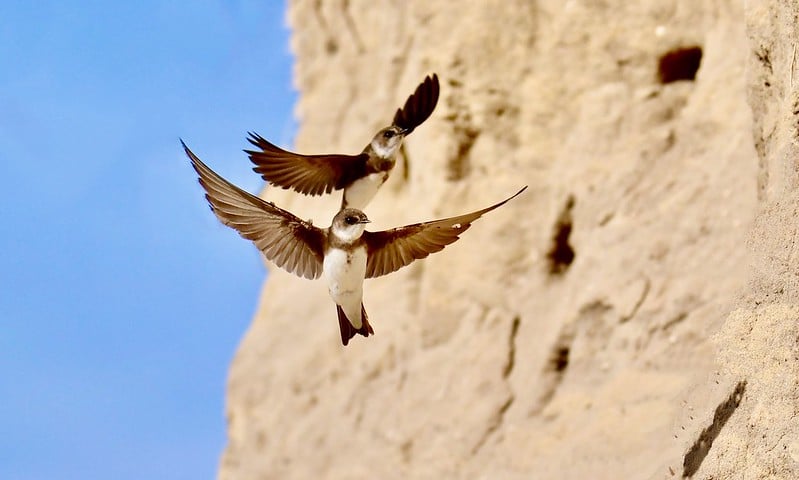
The Maine Endangered Species Act, or MESA, has been instrumental in protecting imperiled species in Maine since 1975. The Act is implemented by the state Department of Inland Fisheries and Wildlife (DIFW), and currently provides special protection to 26 endangered and 25 threatened birds, mammals, fish, reptiles, and amphibians.
Species may be added to or removed from the list, or have their designation changed, after action from DIFW and the legislature. In late September 2022, DIFW released a notice that they were proposing significant changes to the MESA species list, including the removal of two species from the list and the addition of eight species. The Department will hold a public hearing on their proposal on Oct. 11, and is taking public comment through October 21.
Maine Audubon will be commenting on the proposed changes before DIFW, and will also be reaching out to our members and supporters again as updates to the list go before the legislature, likely in early 2023. Here is an update on what species are proposed to come off the list, and which ones may be coming on.
Species Proposed for Removal from the Maine Endangered Species Act
The Department of Inland Fisheries and Wildlife is proposing to remove two species from the list. Removal from the list means that the species, if present, will no longert enjoy special protection under MESAns. Importantly, removal from the MESA list is different from “delisting” a species. If a species is formally “delisted,” it retains protection from a variety of threats including hunting, harassing, and feeding. The Bald Eagle is to date the only species formally “delisted” from MESA. Maine Audubon is discussing with DIFW whether delisting is a better conservation strategy for the following proposed species than removal.
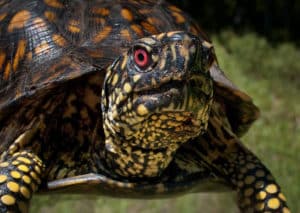
Box Turtle (Terrapene carolina)
These amazing reptiles are at the very northern extent of their range in Maine, and have likely always been rare in the state. No viable populations of Box Turtles have been found in Maine since they were listed in 1986, and it’s possible that even the few individuals that have been found wild in Maine were released as pets.
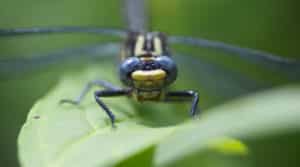
Rapids Clubtail (Gomphus quadricolor)
Rapids Clubtail is known from old surveys using outdated surveying techniques that may not be accurate. Continuous surveys over the years have never unearthed evidence of these dragonflies being in Maine. State biologists believe that it was never present in the state.
Species Proposed for Addition to the Maine Endangered Species Act
DIFW is proposing to add eight species to the list. If added to the list, DIFW may designate areas of ‘essential habitat’ for species under its purview. ‘Essential habitats’ are areas that currently or historically provide physical or biological features essential to the conservation of a species and which may require special management considerations. Once an area is designated essential habitat, MESA requires that no state agency or municipal government shall permit, license, fund, or carry out projects that would significantly alter the habitat or violate protection guidelines adopted for the habitat. In Maine Audubon’s experience, this has never stopped a project. Instead, it has led to collaborative work to mitigate potential impacts to the species. This can often be accomplished by simply restricting dates when the work can occur—for example, not dumping sand from a new dredge on a beach during nesting season.
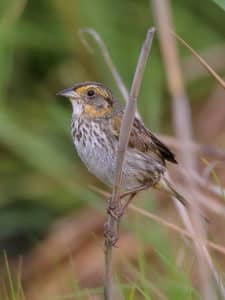
Saltmarsh Sparrow (Ammospiza caudacuta)
Proposed listing: Endangered
The coastal habitat for this secretive bird is being degraded by sea level rise and encroaching development across its range. Climate change fueled storms and tidal surges flood nests before the chicks can fly. Biologists have measured an annual 10.6% decline in the state Saltmarsh Sparrow breeding population since monitoring began in 1998 and are projected to be extinct by 2050 if current conditions continue.

Ashton Cuckoo Bumble Bee (Bombus ashtoni)
Proposed listing: Endangered
Like the cuckoo bird, which lays its eggs in the nests of other bird species, the Ashton Cuckoo Bumble Bee infiltrates the colonies of other bee species and takes over, forcing the bees in the host colony to raise the Ashton young. Like many pollinators, the Ashton Cuckoo Bumble Bee is experiencing steep population declines around North America (up to 90% loss), and is currently known from only a single location in Maine.
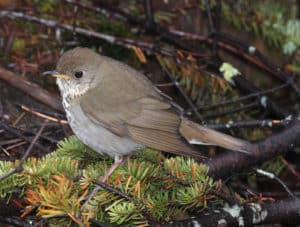
Bicknell’s Thrush (Catharus bicknelli)
Proposed listing: Threatened
Bicknell’s Thrush has a very limited breeding range: stunted forests at the treeline of mountains in New England and northeastern Canada. This already-rare habitat is further threatened by climate change and industrial forestry. Biologists believe that about 20% of the world’s population of Bicknell’s Thrush breeds in Maine.
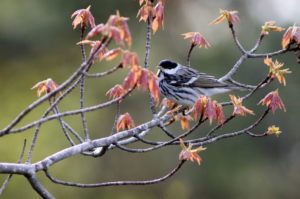
Blackpoll Warbler (Setophaga striata)
Proposed listing: Threatened
This understated warbler breeds in Maine’s boreal forests, and is undergoing a prolonged population decline. State biologists estimate that Blackpoll Warbler numbers are down by 99% since 1960, and by 59% since 2010. The Blackpoll Warbler is already at the southern edge of its range in Maine’s boreal forests, and also faces threats during migration and on its wintering grounds on islands in the Caribbean and in northern regions of South America.
Bank Swallow (Riparia riparia) and Cliff Swallow (Petrochelidon pyrrhonota)

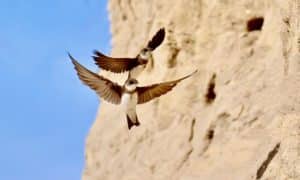
Proposed listing: Threatened
Like other aerial insectivores, populations of these two swallow species have declined sharply in recent years. Cliff Swallows have experienced an estimated 6.9% per year decline in Maine between 1966 and 2019, and Bank Swallows have had an estimated 10.9% annual decrease. There is some evidence that a lack of suitable nesting areas is impacting Bank Swallows, while Cliff Swallows may be particularly susceptible to impacts on their South American wintering grounds.

Tricolored Bat (Perimyotis subflavus)
Proposed listing: Threatened
Like many North American bat species, the Tricolored Bat has been devastated by White-nose Syndrome. Their historical low abundance in Maine and susceptibility to White-nose syndrome make conservation an urgent concern.
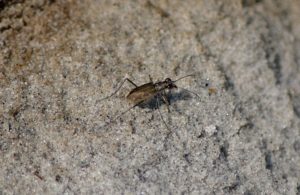
Margined Tiger Beetle (Ellipsoptera marginata)
Proposed listing: Threatened
The Margined Tiger Beetle lives along intertidal zones, back beaches, saline flats, salt marshes, beaches, and tidal mud flats along the Atlantic coast. It is known from just 13 locations in seven Maine towns between York and Georgetown, and its low and fragmented populations are further threatened by sea-level rise and habitat degradation from adjacent development.
Maine Audubon is eager to support the listing process, and will be in touch soon with information on how you can help protect these species.
